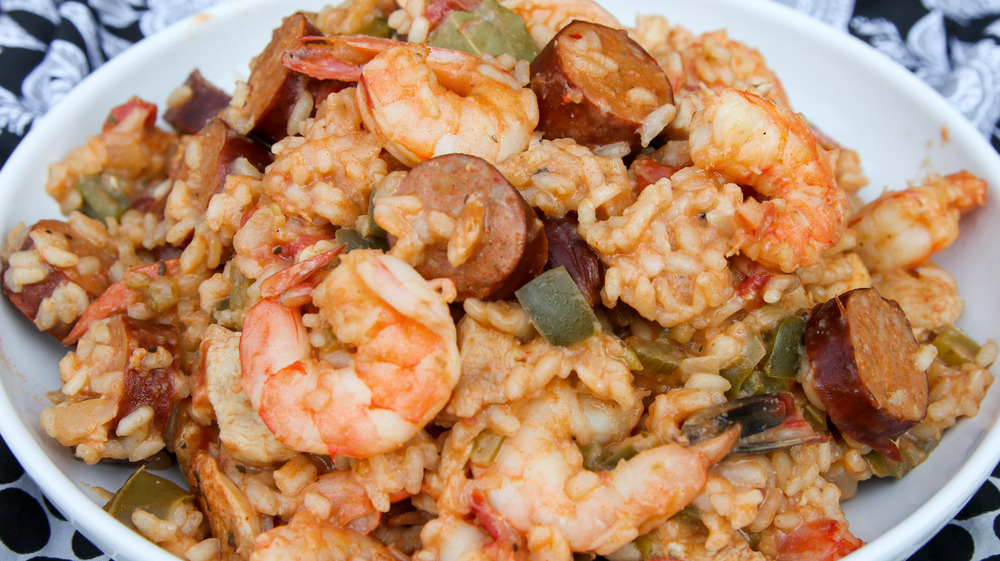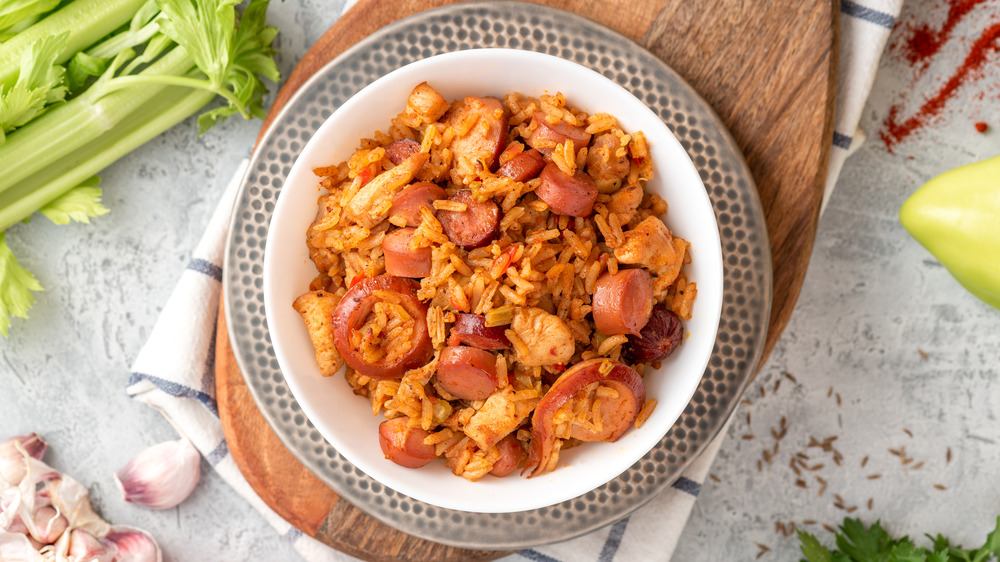What Is Jambalaya And What Does It Taste Like?
In one of the most memorable episodes of Anthony Bourdain: Parts Unknown, the Cajun Mardi Gras, Season 11, Episode 7, Bourdain stays far away from the bead-throwing mania of Bourbon street and gives viewers a local view on the festivities. The revelry includes Bourdain going pig-hunting on an airboat and donning an elaborate costume to take part in a zany, roving Mardi Gras party. Not surprisingly, Bourdain samples an ever-impressive variety of Louisiana fare in the episode, including everything from crawfish etouffee and an oyster po-boy to fried sausage balls and cracklins, and, of course, jambalaya (via Eater).
Jambalaya is one of those dishes that invokes a place's history. According to Chowhound, there was a time in Louisiana's history that it was controlled by the Spanish, from 1762 to 1800. During that timeframe, the French tried to make paella but couldn't find saffron. Instead, they used tomatoes, creating what is now known as Creole jambalaya. The history doesn't stop there. As the dish made its way out of the city, tomatoes were less accessible, leading to the creation of Cajun jambalaya.
Jambalaya has a basic structure of rice, spices, protein, vegetables, and seasoning, according to McCormick, but the flavor and ingredients can be as varied as pizza toppings. The hearty dish can include smoked pork sausage and chicken, or seafood, like shrimp or crawfish — or any combination thereof! Jambalaya can even be very spicy or mild, depending on who's shaking the spices.
What is the difference between Cajun and Creole jambalaya?
Creole jambalaya originated near New Orleans and is often called red jambalaya. It gets its hue from tomatoes. The dish is made with the "holy trinity" of Creole cooking: onion, celery, and bell pepper. The vegetables are cooked with smoked sausage and chicken, and then tomatoes, stock, and rice are added, boiled, and cooked. According to Nola.com, this version may be a spinoff of a similar West African delicacy known as jollof rice.
Cajun jambalaya first sprang up in rural South Louisiana and is brown. It gets its color because the rice absorbs the sauce (and there are no tomatoes). It's usually made in cast-iron pots that completely caramelize the sugars in the meats vegetables. The same holy trinity vegetables are added, and then the stock and rice. According to The Spruce Eats, browning the Cajun jambalaya gives it a greater smokiness and depth of flavor than you'll normally experience with its Creole counterpart.
If you want to try out a jambalaya recipe and are torn between which kind to make, New York Times staff member Sara Bonisteel recommended a recipe with tomatoes from Nola.com called Jambalaya, My Way. Bonisteel liked the menu because it is so adaptable. She even made use of leftovers with it: "I added the last bit of turkey breast form Thanksgiving to the last batch I made."

